First Sergeant William A. Andersen
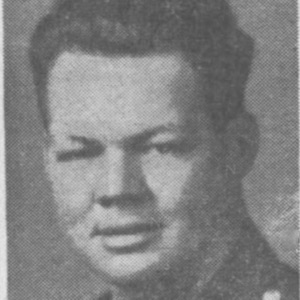
- Unit: 30th Infantry Division, 120th Regiment, 2nd Battalion, Company H
- Service Number: 20010079
- Date of Birth: December 8, 1921
- Entered the Military: February 12, 1940
- Date of Death: July 16, 1944
- Hometown: Honolulu, Hawaiʻi
- Place of Death: Pont-Hébert, France
- Award(s): Purple Heart
- Cemetery: Plot J, Row 20, Grave 25. Normandy American Cemetery, Colleville-sur-Mer, France
Mentored by Ms. Amy Boehning
Mililani High School
2016-2017
Early Life
Family History in Hawaiʻi
First Sergeant William A. Andersen’s grandparents, Hans and Amelia Andersen, migrated to the Hawaiian Islands from Norway in 1881. Hans worked on a Maui rubber plantation before moving his family to Oahu in the early 1900’s to work on the Waianae Sugar Plantation.
Wilhelm A. Andersen, father of First Sergeant William A. Andersen, Jr., served in the Hawaii Territorial Guard as an officer. He was commissioned in late 1917, and sent to Norfolk, Virginia, to board a ship bound for Europe. However, before the vessel reached Europe, news arrived that the First World War ended. On October 26, 1920, Wilhelm Andersen, Sr. married World War I army nurse and Minnesota native, Margaret Jean Nisbet, in Honolulu.
On December 8, 1921, they had their first and only child, William A. Andersen, Jr. Though the family lived in Kaimuki, Andersen, Jr. spent a great deal of time with family on the North Shore of Oahu. He also traveled frequently with his family, including a trip with his mother to visit her relatives in Canada.
School Years
Andersen, Jr. attended Aliiolani School and Roosevelt High School in Honolulu. He participated in a number of school clubs and sports teams. He played for the Varsity football team, and rose to the rank of lieutenant in the band. He served as a member of the school high court his senior year, deciding cases of student misconduct, but he also found an outlet for his lighter side with the school Glee Club.
On February 12, 1940, while he was still in school, he enlisted in the Hawaiʻi Army National Guard. At the same time he also held an apprenticeship at the American Can Company. Later in 1940, Andersen graduated from Roosevelt High School.
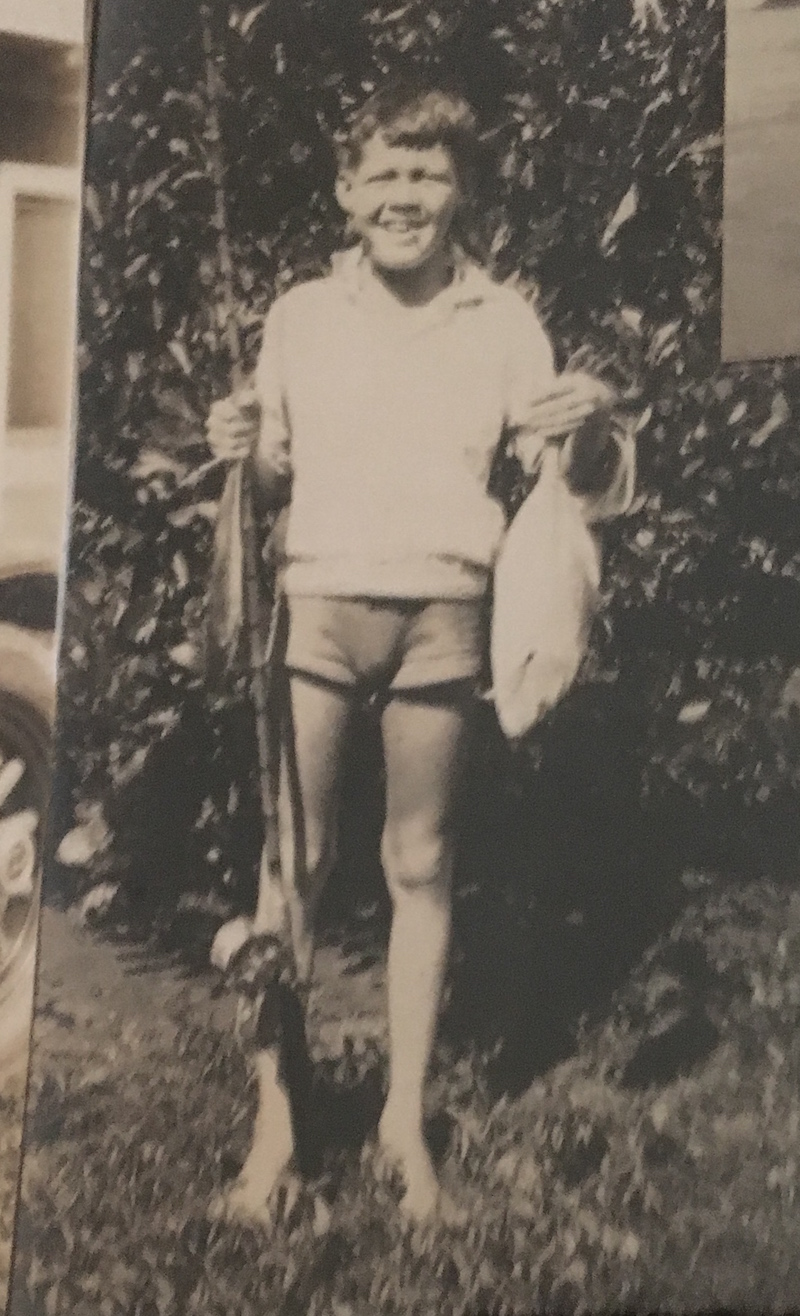
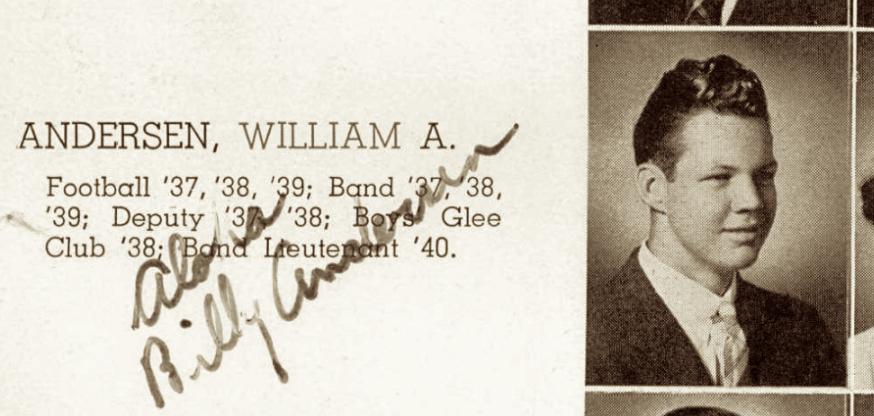
Homefront
On October 15, 1940, President Roosevelt federalized the Hawaiʻi Army National Guard prior to America’s entrance into the war. It consisted of two regiments, the 298th and the 299th Infantry Regiments, the former of which was commanded by Colonel Wilhelm A. Andersen, Sr. The 298th Infantry Regiment trained and operated at Schofield Barracks on Oahu.
Bombing of Pearl Harbor
On December 7, 1941, when the Japanese launched a surprise attack on Oahu. In a matter of hours, 2,403 Americans were killed, 18 ships sunk, and hundreds of aircraft destroyed. World War II reached America’s shores.
Soon after the attack, Lieutenant General Walter Short was installed as the Military Governor, and Martial Law fell over the islands. In those early days, there was much panic and concern from both the military and civilians as to whether the Japanese would come back, perhaps with an invasion force. The population lived under constant fear. Blackout protocols were enforced at night and soldiers patrolled the streets.
The military sought to fortify the islands in the event of another attack. Nearly 250 public air raid shelters were built. Civilians dug defensive trenches and installed barbed wire.
Civil liberties were also suppressed, including freedom of the press, the right to a trial by jury, and Fourth Amendment protections against unlawful searches and seizures. Unlike other parts of the country, most Japanese Americans from Hawaiʻiwere not interned because they were simply too many.
As the war effort in the Pacific intensified, thousands of American soldiers, Marines, and sailors would pass through the Hawaiian Islands on their way to the Pacific Theater.
Hawaiʻi National Guard in 1942
Many soldiers in the Hawaiʻi Army National Guard were sent to different divisions, while those of Japanese descent would be consolidated into the 100th Infantry Battalion.
Military Experience
298th Regiment of the Hawaiʻi Army National Guard
William A. Andersen, Jr. enlisted in the Hawaiʻi Army National Guard on February 12, 1940, which was federalized on October 15. Andersen trained at Schofield Barracks in central Oahu with his father as his commanding officer.
Andersen was a model soldier, but one who had fun as well. In November 1940, he was promoted to sergeant, and a few months later he entertained some of his fellow troops with his singing and acting skills at a show. On his enlistment records he listed acting as his prior profession.
On December 7, 1941 he and his fellow soldiers witnessed the attack on Pearl Harbor first hand while assigned to the defense of the windward coast of Oahu.
Joining the 30th Infantry Division
Andersen was assigned to the 30th Infantry Division, 120th Regiment, 2nd Battalion, Company H for the duration of the war. He transferred from Hawaiʻi to Camp Blanding, Florida to join his new unit. Although originally composed of National Guard troops from the Carolinas, after the outbreak of war, many of its men and officers were assigned to new divisions formed for the war effort. Therefore, Andersen was part of the infusion of men sent to replace those losses.
During this time, he trained at Fort Benning, Georgia; Camp Forrest, Tennessee; and Camp Atterbury, Indiana.
Leaving for Europe
On February 12, 1944, the 30th Infantry Division departed Boston. The 120th Regiment, set sail on the SS Argentina. Andersen arrived in Glasgow, Scotland on February 22 and was transported south to the training grounds at Bognor Regis, England. The 30th Infantry Division trained here for Operation Overlord until April 3, 1944 when they moved north to Aylesbury and Great Missenden. In June they moved again to Southampton prior to crossing the English Channel.
Fighting in Normandy
The 30th Infantry Division arrived in Normandy on the evening of June 13. The unit engaged in capturing towns inland from the beachhead. Progress was slowed by the presence of the immense hedgerows known as the Bocage. They consisted of a mound of dirt (usually three feet high), trees, and shrubs. The Bocage was used to separate parcels of land, but the Germans found that it also allowed them to conceal tanks, artillery, and infantry units.
The 30th Infantry Division played a critical role in the capture of Saint-Jean-de-Daye. They attacked across the Vire River on July 7, with Andersen’s 120th Regiment advancing across the Vire Canal in the early afternoon. The 120th Regiment faced strong resistance from the German defenders, but the Americans emerged successful, and soon Saint-Jean-de-Daye was captured by American forces. Despite a German counterattack, the American troops held their ground.
Movement Towards Saint-Lô
The 30th Infantry Division advanced towards the Saint-Lô-Perier Highway on July 15. The following day, the 120th Regiment would be the lead element in the division’s advance along the Saint-Lô-Carentan Road. Andersen’s 2nd Battalion advanced on the left side of the road at 10:00 a.m. on July 16. The unit encountered significant artillery fire as well as German armor. Later this day, Andersen led his company down a street along the road, and was killed by German sniper fire near Pont-Hébert.
Shortly after his death, the 30th Infantry Division would play a key role in Operation Cobra. Under the command of Lieutenant General Omar Bradley they pushed past Saint-Lô south to Avranches to facilitate the breakout from the Normandy region.
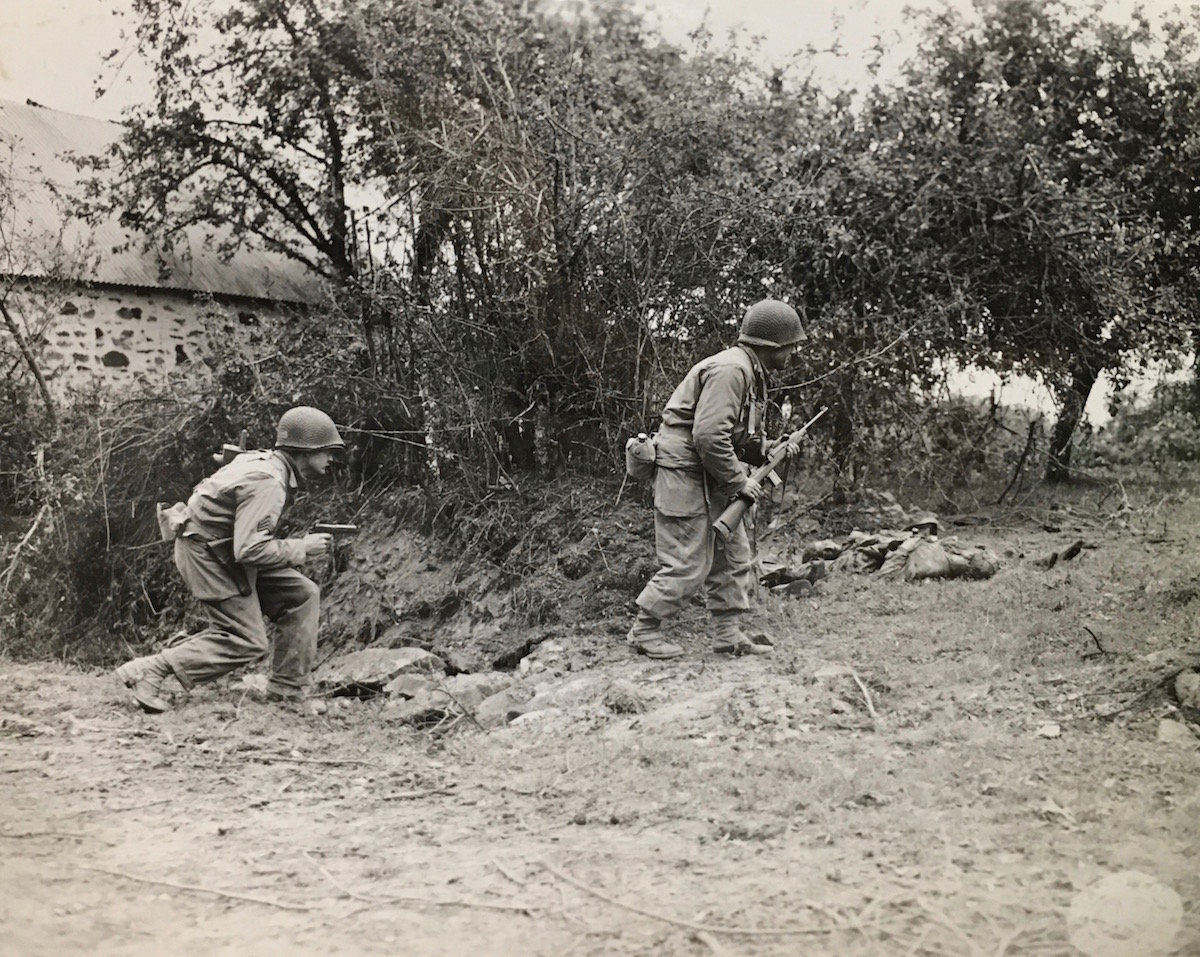

Eulogy
On June 10, 1944, First Sergeant William A. Andersen landed on Omaha Beach with the 30th Infantry Division as they began their fight to liberate France. In the following weeks his division helped secure towns near the beachhead. Near Saint-Lô, on July 16, he was killed fighting to rid Europe of Nazi domination.
In correspondence with the Army, Colonel Wilhelm A. Andersen and his wife sought information about the circumstances of their son’s death. After the war, Andersen, Sr. became a strong advocate for a living memorial to be established in Hawaiʻi to honor the soldiers who made the ultimate sacrifice. He said, “Mrs. Andersen and I have our only son buried in Normandy. He will lie in a military grave in the country where he fell. But he and others died that we might have peace in the world. I am for a living memorial – something that will definitely foster world peace.” Colonel Andersen, it is my hope that we were able to honor your son’s memory.
It is not an exaggeration to say that First Sergeant Andersen gave his life so that the world could be free of tyranny and oppression. He, among many others, paid the steep price of freedom for us all, so that we could live our lives free and in peace. And although that fight for freedom continues today, we owe a great deal of gratitude for the sacrifice of First Sergeant Andersen and his fellow men who served in the 30th Infantry Division.
Thank you for your service and for your sacrifice, First Sergeant William A. Andersen. Rest in peace.
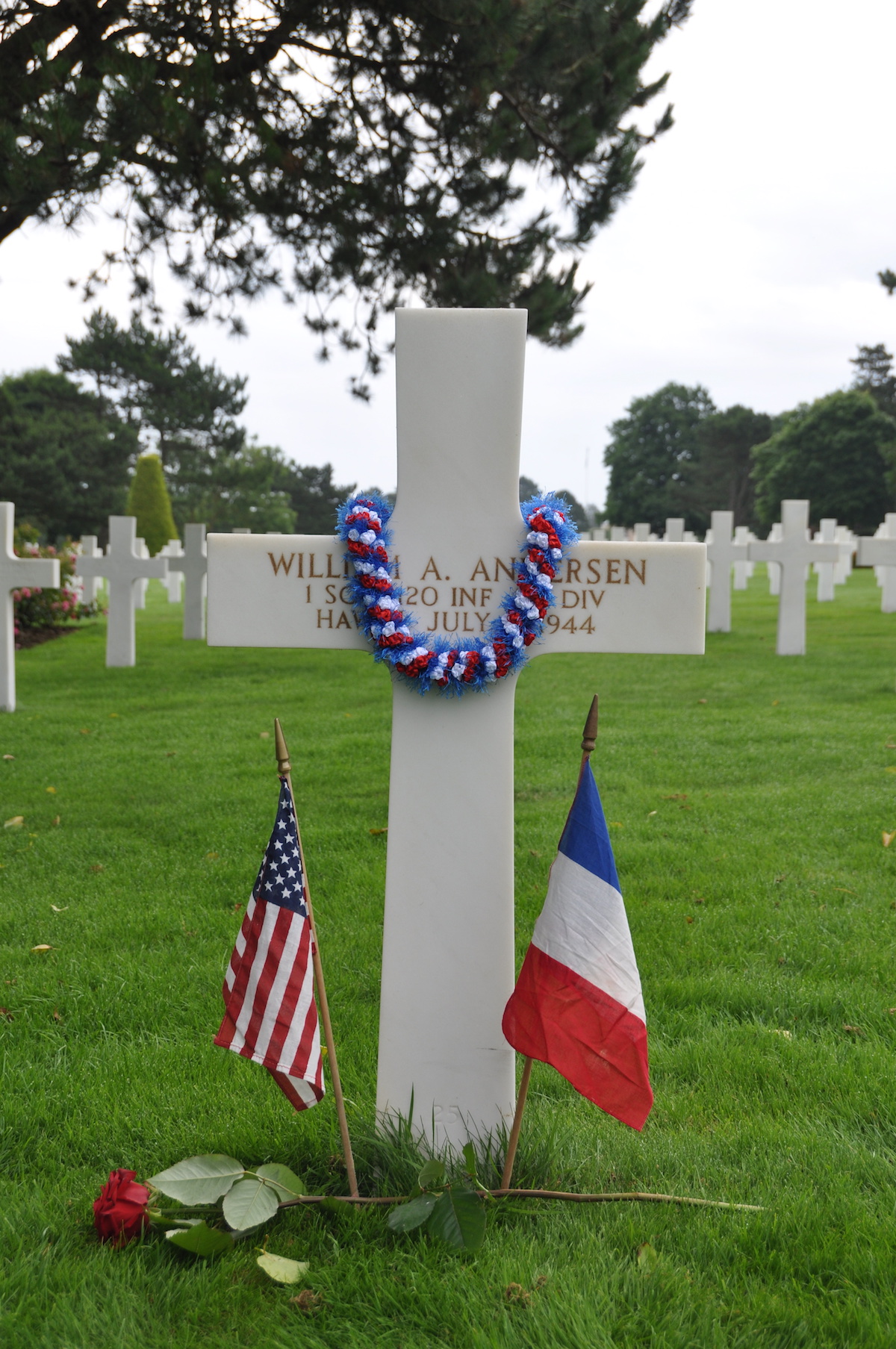
Reflection
Eternal gratitude and pride: these are the words which come to mind when I think of my participation in the Normandy: Sacrifice for FreedomⓇ Albert H. Small Student and Teacher Institute. This program sought to teach young Americans about the price of freedom and the depth of the sacrifices made by the Greatest Generation.
We were able to understand the size and scope of the overall war effort through guided readings, and recognize the innately personal and human side of war through researching our Silent Heroes. We researched our Silent Heroes to the degree that each student-teacher pair knew more about our particular man than nearly any other living person. Although we cannot yet claim to be experts on the Second World War, we certainly gained a great deal of knowledge through our readings, our lectures, and the museums we visited in Normandy.
The mission of this program is ever so important for the youngest of Americans. For many in the school system today, the Second World War is fading further and further into history. It is something that is often read about in general terms, but seldom understood by our youth. For those who lived through the war, life as they knew it was forever altered. Aside from thrusting young Americans, not all that unlike myself, into the midst of the greatest conflict in human history, it also permanently changed the geopolitical climate.
But perhaps what is even more important is the realization that more 400,000 brave American heroes gave their lives for both people and countries which they did not know, and the homeland which they cherished. Their sacrifice allowed freedom to return to the world by emphatically defeating the forces of tyranny. Freedom is the greatest of conditions, but all things worth having come at a price. Freedom is not free. Men like our Silent Heroes paid the price for our freedom. Let us never forget that many have given much, and some have given all, so that we could be free.
Eternal gratitude and pride. I have walked away from this program eternally grateful for the sacrifices of those who have come before us, and eternally proud of their bravery and fortitude in the face of danger and death. I can only hope that we are able to reach more young Americans to help them come to understand sacrifice as I have, for then we can ensure that the sacrifices made by our fellow countrymen will not have been in vain.
Bibliography
Primary Sources
“298th Ends First Year In Service.” Honolulu Advertiser, October 16, 1941. www.newspapers.com.
442nd Regimental Combat Team, September 1944 – January 1945; World War II Operations Reports, 1941-1948, Records of the Adjutant General’s Office, 1917-, Record Group 407 (Box 17034); National Archives at College Park, College Park, MD.
Albright, Harry. “1,700 Men Are Called For Year’s Training.” Honolulu Advertiser, October 16, 1940. www.newspapers.com.
Andersen Family Photographs. 1900-1944. Courtesy of William Andersen.
“Andersen to Command Guard Camp.” Honolulu Advertiser, July 30, 1929. www.newspapers.com.
30th Infantry Division “Old Hickory” during WWI and WWII. Department of the Army, 1945. North Carolina National Guard. Accessed July 11, 2017. www.youtube.com/watch?v=FBC3cNnpDzY.
“Business Zone Sought in Writ.” Honolulu Star-Bulletin, December 22, 1927, 11. www.newspapers.com.
“Call to Guard! Weep Not For The Lads Who Camp At Schofield.” Honolulu Advertiser, November 3, 1940. www.newspapers.com.
“A Camera Trip Through Camp Atterbury, Drilling and Classes in the Field.” Camp Atterbury, Post Public Relations Office, 1943. Indiana Historical Society. Accessed February 14, 2017. cdm16066.contentdm.oclc.org/cdm/ref/collection/p16066coll13/id/399.
“Col. Andersen Welcomes Family Home.” Honolulu Advertiser, August 28, 1935. www.newspapers.com.
“Former Maui Resident Passes Away in Honolulu.” The Maui News, March 20, 1920, 5. www.newspapers.com.
From back of print: Left to right: Lieutenant Colonel Clarence M. Olsen, Captain Louis A. Menard, Major Reed Richards. Seated, Brigadier General Wilhelm A. Andersen. Photograph. February 7, 1943. Hawaii War Records Depository, University of Hawaii at Manoa (hwrd1022). digicoll.manoa.hawaii.edu/hwrd/Pages/viewtext.php?s=browse&by=title&route=browseby.php&tid=167.
From back of print: Staff of an infantry regiment from left to right: Colonel W. A. Andersen, Major Francis Kanahele, Captain Arthur B. Chun, Captain Lake R. Bellinger, Lieutenant Colonel John Simerson. Oahu, Hawaii. Photograph. October 3, 1942. Hawaii War Records Depository, University of Hawaii at Manoa (hwrd1020). digicoll.manoa.hawaii.edu/hwrd/Pages/viewtext.php?s=browse&by=title&route=browseby.php&tid=165.
“Gales, Rough Weather Hit Manoa Daily.” Honolulu Advertiser, December 13. 1923, 13, www.newspapers.com.
“Group at Waialua Begins Five Week Anti-Sabotage Course.” Honolulu Star-Bulletin, March 26, 1941, 1. www.newspapers.com.
“The Guard Enters the Army.” Honolulu Star-Bulletin, October 15, 1940, 8. www.newspapers.com.
“A Guard Inspection.” Honolulu Star-Bulletin, August 25. 1936, 2. www.newspapers.com.
“Guard Units Get Brigade Orders.” Honolulu Star-Bulletin, October 15, 1940, 1+. www.newspapers.com.
Hawaii. Oahu Island, Waialua District. 1910 U.S. Census. Digital Images. www.familysearch.org.
Hawaii. Oahu Island, Waialua District. 1920 U.S. Census. Digital Images. www.familysearch.org.
Hawaii. Oahu Island, Waialua District. 1930 U.S. Census. Digital Images. www.familysearch.org.
Hawaii. Oahu Island, Waialua District. 1940 U.S. Census. Digital Images. www.familysearch.org.
“Hawaii Guard Highly Regarded.” Honolulu Advertiser, May 5, 1931, 2. www.newspapers.com.
“Hawaii Guardsmen Becoming Crack Soldiers.” Honolulu Advertiser, September 8, 1941, 8-9. www.newspapers.com.
“HNG Honors Well Known Old Soldiers.” Honolulu Star-Advertiser, June 26, 1948, 2. www.newspapers.com.
“Isle National Guard Becomes Part of Army.” Honolulu Advertiser, October 16, 1940, 9. www.newspapers.com.
“Isle Servicemen Casualties First Sgt. William A. Andersen.” Honolulu Advertiser, August 22, 1944, 5. www.newspapers.com.
“’Living War Memorial’ Plan New Pacific Foundation.” Honolulu Star-Bulletin, March 8, 1946, 4. www.newspapers.com.
Marsis, Charles. “First Inspection of Guard At Schofield Due in Week.” Honolulu Star-Bulletin, October 18, 1940, 3. www.newspapers.com.
“Mrs. Andersen Obituary.” Honolulu Advertiser, November 10, 1960, 25. www.newspapers.com.
“National Guard Holds General Mobilization.” Honolulu Advertiser, May 17, 1939, 1+. www.newspapers.com.
“News of Interest to the Services of Hawaii.” Honolulu Advertiser, July 10, 1938, 50. www.newspapers.com.
Pascua, Sgt. Gilbert. “298th Engineers Detachment.” Honolulu Star-Advertiser, December 26, 2005, 16. www.newspapers.com.
President Roosevelt High School 1938 Yearbook. Honolulu: Roosevelt High School, 1938.
President Roosevelt High School 1939 Yearbook. Honolulu: Roosevelt High School, 1939.
President Roosevelt High School 1940 Yearbook. Honolulu: Roosevelt High School, 1940.
Records for William A. Andersen; World War II Army Enlistment Records, 1938-1946 [Electronic File], Record Group 64; National Archives at College Park, College Park, MD [retrieved from the Access to Archival Databases at aad.archives.gov/aad/fielded-search.jsp?dt=466, July 11, 2017].
“Roll of Honor of Hawaii’s War Dead.” Honolulu Advertiser, May 30, 1946, 8. www.newspapers.com.
“Roosevelt High to Graduate Class of 296 on June 3.” Honolulu Star-Bulletin, 18. www.newspapers.com.
“Roosevelt High Will Graduate Class of 296.” Honolulu Star-Advertiser, May 19, 1940, 9. www.newspapers.com.
“Snuffy Smith in Pot Luck.” Honolulu Advertiser, January 4, 1941, 4. www.newspapers.com.
“TH Militia To Answer Call Today.” Honolulu Advertiser, October 15, 1940, 1-2. www.newspapers.com.
Trask, 1st Lieut. Bernard K., Letter. Honolulu Star-Advertiser, October 21, 1942, 12. www.newspapers.com.
Vandergrift, K. S. “Schofield–One More Red Land’s Promotions.” Honolulu Advertiser, May 25 1941, 53. www.newspapers.com.
Ibid. “Schofield Po-Pourri Schofield Promotions.” Honolulu Advertiser, November 24, 1940, 38. www.newspapers.com.
Vermont, St. Albans Canadian Border Crossings, 1895-1954. 1935. Family Search, www.familysearch.org.
“Veterans Urge ‘Living Memorial’ To Hawaii’s World War II Dead.” Honolulu Star-Bulletin, March 12, 1946, 2. www.newspapers.com.
“W. A. Andersen Is Selected As ‘Man Of Week.’” Honolulu Star-Advertiser, June 24, 1948, 7. www.newspapers.com.
“Waialua Holds Final Drill For Plunge Into Darkness.” Honolulu Advertiser, May 17, 1939, 4. www.newspapers.com.
“Wilhelm Andersen Obituary.” Honolulu Star-Bulletin, February 8. 1983, 9. www.newspapers.com.
“William Andersen Killed In Action.” Honolulu Advertiser, September 24, 1944, 9. www.newspapers.com.
William A. Andersen, Individual Deceased Personnel File. Department of the Army.
Williams, John. “Guard Fares Afield In Style.” Honolulu Star-Bulletin, August 25, 1936, 1-2. www.newspapers.com.
Ibid. “Youngest ‘Guardsman’ Is Sorry That Camp Is Over.” Honolulu Star-Bulletin, August 25, 1934, 9. www.newspapers.com.
WWII Operations Reports, 1940-48, 30th Infantry Division, Records of the Adjutant General’s Office, Record Group 407 (Box 7556), National Archives at College Park, College Park, MD.
WWII Operations Reports, 1940-48, 30th Infantry Division, Records of the Adjutant General’s Office, Record Group 407 (Box 7701). National Archives at College Park, College Park, MD.
WWII Operations Reports, 1940-48, 30th Infantry Division Infantry Div. 1944-45, Records of the Adjutant General’s Office, Record Group 407 (Box 7702), National Archives at College Park, College Park, MD.
WWII Operations Reports, 1940-48, Combat Interviews, Records of the Adjutant General’s Office, Record Group 407 (Box 19041), National Archives at College Park, College Park, MD.
Secondary Sources
Andersen, Lief. Personal interview with the author. March 5, 2017.
Andersen, William A. Personal interview with the author. March 5, 2017.
Blumenson, Martin. Breakout and Pursuit. Washington, U.S. Army Center of Military History, 1984.
Brown, DeSoto. Hawaii Goes to War: Life in Hawaii from Pearl Harbor to Peace. Honolulu, Bess Press, 1989.
Conn, Stetson, et al. Guarding the United States and Its Outpost. Washington D.C., Office of the Chief of Military History, 1964. Accessed July 11, 2017. www.history.army.mil/books/wwii/Guard-US/index.htm#contents.
St.-Lo. Washington D.C.: U.S. Army Center of Military History, 1946. Accessed July 11, 2017. www.history.army.mil/books/wwii/100-13/st-lo_0.htm.
Harrison, Gordon A. Cross Channel Attack. Fort McNair, U.S. Army Center of Military History, 1993.
Hewitt, Robert L. Work Horse of the Western Front: The Story of the 30th Infantry Division. Nashville, Battery Press, 1980.
History of the 120th Infantry Regiment. Washington D.C., Infantry Journal Press, 1947.
Howard, Michael Eliot. The First World War: A Very Short Introduction. Oxford, Oxford UP, 2007.
In Freedom’s Cause: A Record of the Men of Hawaii Who Died in the Second World War. Honolulu, University of Hawaii Press, 1949.
Lum, Stephen. “My Back Pages: BG Wilhelm Arthur Andersen.” Retiree News, Retiree News. Last modified July 30, 2014. Accessed July 11, 2017. retireenews.org/2014/07/30/my-back-pages-bg-wilhelm-arthur-andersen/. .
Nakamura, Kelli Y. “100th Infantry Battalion.” Densho Encyclopedia, Last modified October 11, 2016. Accessed July 11, 2017. encyclopedia.densho.org/100th_Infantry_Battalion/.
Ibid. “298th/299th Infantry.” Densho Encyclopedia, Last modified January 13, 2014. Accessed July 11, 2017. encyclopedia.densho.org/298th/299th%20Infantry/.
Ibid. “Hawaii Territorial Guard.” Densho Encyclopedia, Last modified June 10, 2015. Accessed July 11, 2017. encyclopedia.densho.org/Hawaii_Territorial_Guard/.
“Pearl Harbor.” HISTORY. A&E Television Networks. Accessed July 11, 2017. www.history.com/topics/world-war-ii/pearl-harbor.
Satrum, John. “1881 – Norwegians In Hawaii Conflict In Plantation Society.” Norwegian-American Historical Association In Norway. Last modified June 14, 2011. Accessed July 11, 2017. www.satrum.net/publications/documents/1881_Norwegians_in_Hawaii.pdf.
Scheilber, Jane L., and Harry N. Scheilber. “Martial law in Hawaii.” Densho Encyclopedia, Last modified July 29, 2015. Accessed July 11, 2017. encyclopedia.densho.org/Martial_law_in_Hawaii/.
Towers, Frank W. “History of Old Hickory.” The 30th Infantry Division in World War II. Last modified July 3, 2006. Accessed July 11, 2017. www.30thinfantry.org/history.shtml.
Towers, Frank W., “Camp Atterbury to England to Normandy & Crossing the Channel.” The 30th Infantry Division in World War II. Accessed July 11, 2017. www.30thinfantry.org/history.shtml.
“William A. Andersen.” American Battle Monuments Commission. Accessed July 11, 2017. www.abmc.gov/node/406408#.WXadodPyuHo.

